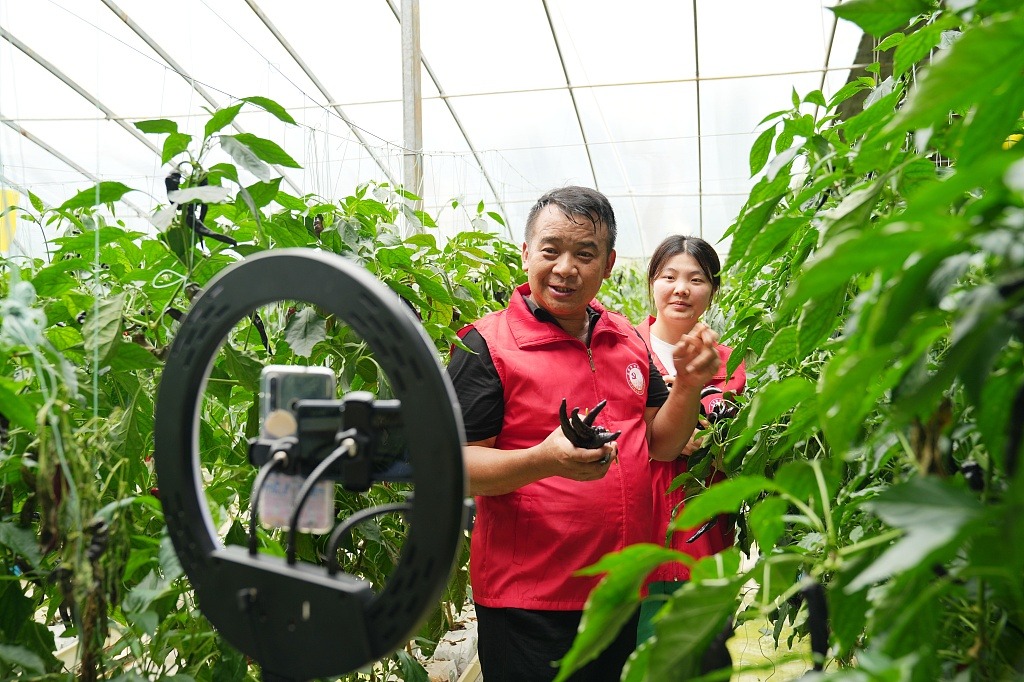Standardizing public services
By WANG SHENCHENG and LIU XUE | China Daily | Updated: 2023-10-28 09:52

The government recently issued the Standardization Action Plan for Rural Vitalization, listing the reinforcement of the standards for rural public services as a key task in the years to come, and ensuring that such standards play a leading role in promoting the vitalization of rural areas.
If properly implemented, the action plan will not only make up for the shortcomings of basic public services in rural areas, but also promote the equalization of basic public services in urban and rural areas.
Since the 18th National Congress of the Communist Party of China in 2012, China has been promoting equal basic public services in urban and rural areas, as part of its task to accelerate rural vitalization.
For example, an integrated basic pension insurance system for urban and rural residents was established in 2014, the basic medical insurance system for urban and rural residents was integrated and a unified compulsory education funding guarantee mechanism for urban and rural areas was established in 2016, and the gap between urban and rural areas in terms of minimum living allowance was bridged in 2021.
The equalization of basic public services in urban and rural areas has even been written into law.
But despite a top-level systemic design being in place for the equalization of basic public services in urban and rural areas and lifting of the hukou (household registration) barriers, whether the goal can be realized still depends on whether the rural basic public services are standardized. The national standards for basic public services are vital to improving people's livelihoods and the basic public service system, and promoting the equalization of basic public services in urban and rural areas.
To reinforce rural public service standards, the key is to strengthen the implementation and application of national basic public service standards in rural areas, and promote the equalization of urban and rural basic public services.
The basic public service standards in no administrative divisions should be lower than the national standards. And all provinces and provincial-level regions should use counties as the smallest pilot zones for public service standards, and based on their concrete conditions, make good use of digital technologies to apply the national basic public service standards in rural areas.
As the basic spatial unit that connects big cities and the countryside, counties have natural advantages in promoting the integrated development of urban and rural areas. Therefore, it is necessary to give county-level governments more autonomy in the use of resources, and strengthen the comprehensive service capacity of towns in counties.
At the same time, the public service systems in townships should be improved with the aim of building townships into regional centers serving farmers. And the development of a county-level medical and health community, an urban-rural education consortium and a three-tier (county, township and village) eldercare network should be accelerated, so as to promote the integration of urban and rural basic public service systems.
Also, the standards for basic public services in rural areas should be in line with local socioeconomic conditions, because the standardization of basic public services is part of a dynamic governance model.
Therefore, all administrative divisions should assess their economic development level and financial condition, and set reasonable rural basic public service standards. They should first address the concerns of the local people and focus on resolving long-standing issues hindering the equalization of basic public services in urban and rural areas. Local authorities should try to meet the social expectations and strengthen pre-event analysis and risk assessment, in order to ensure the public services meet the needs of rural development.
Digital technologies such as big data, the internet of things and AI should be given full play to facilitate the application of the basic public service standards in rural areas. It is also necessary to make full use of digital technologies to break through the restrictions of time, space and identity, and promote the integration and standardization of basic public service systems including education, healthcare, eldercare and social security to promote the equal distribution and use of resources in different places.
With the popularization and development of digital technologies, the gap between urban and rural internet penetration has narrowed. All rural schools today have access to the internet, with telemedicine services covering about 90 percent of the county-level hospitals. In some provinces, labor employment and social security service platforms cover all townships and villages.
And digital information-based development should be further promoted to build joint urban-rural platforms and optimize the "cloud platform" to provide public services, and promote the equalization of public services in urban and rural areas.
Wang Shencheng is an assistant professor at the Department of Social and Ecological Studies, Party School of the Central Committee of the CPC (National Academy of Governance); and Liu Xue is an assistant professor at the National Institute of Social Development, Chinese Academy of Social Sciences.
The views don't necessarily reflect those of China Daily.























